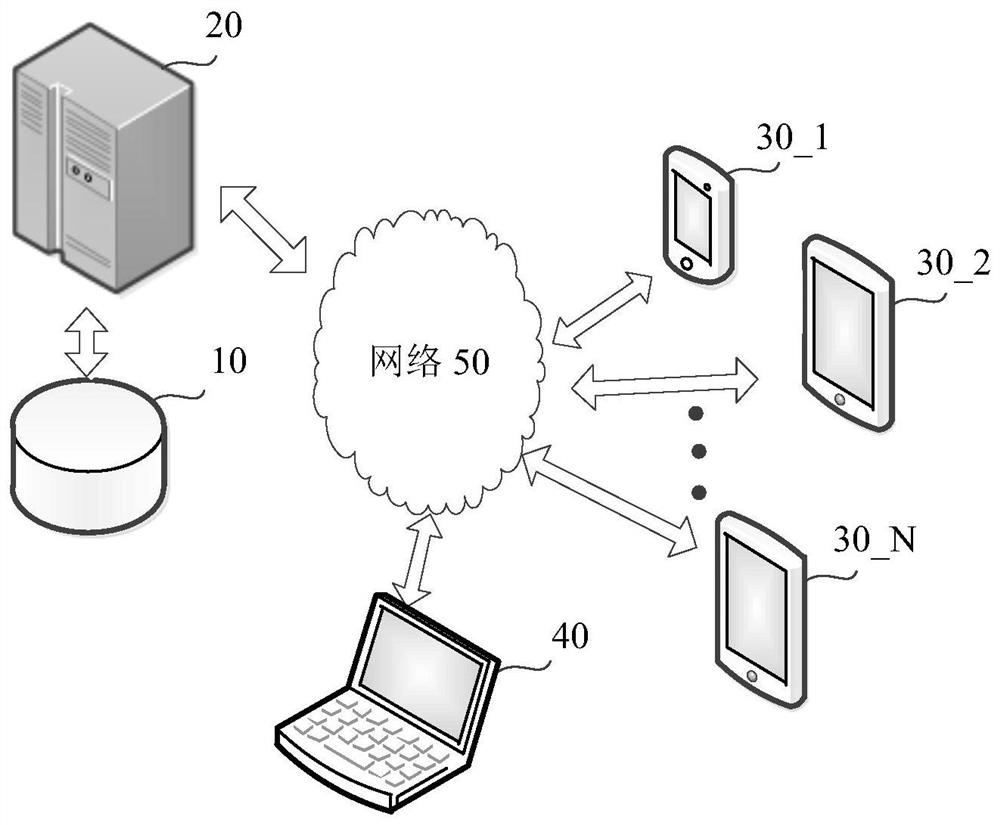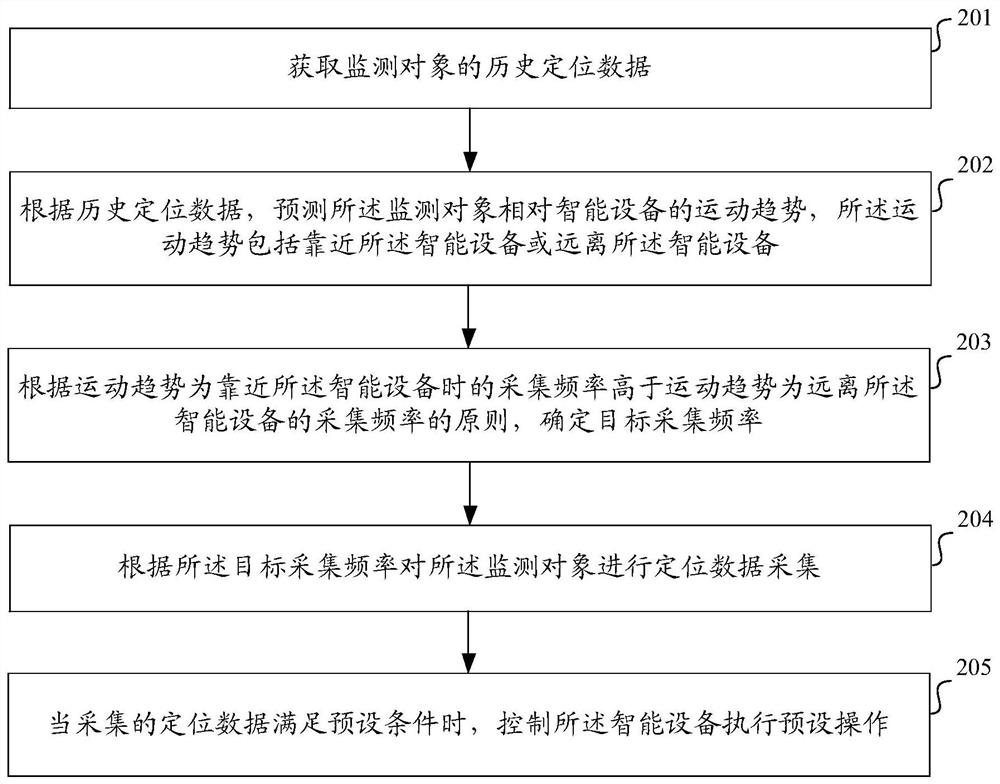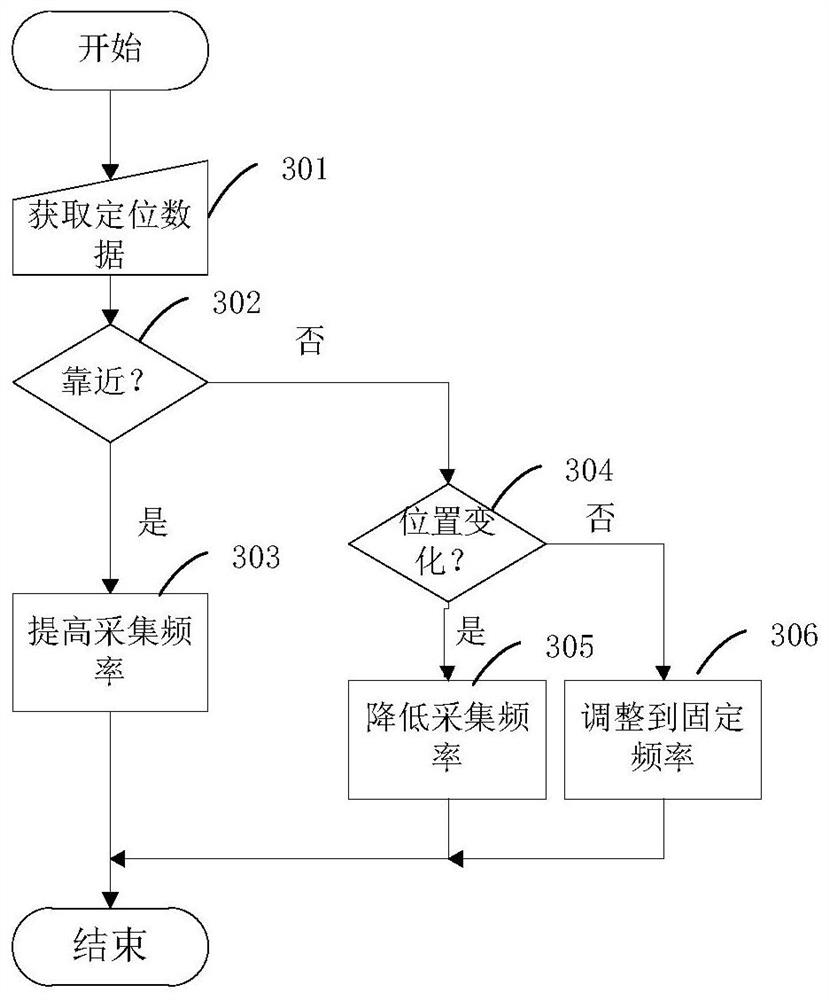Positioning data processing method, device, electronic device and storage medium
A technology for positioning data and processing methods, which is applied in location-based services, power management, electrical components, etc., can solve problems such as waste of traffic, terminal power consumption, resource and time consumption, and achieve power consumption and traffic reduction. The frequency of positioning data collection and the effect of reducing the operation of positioning data collection
- Summary
- Abstract
- Description
- Claims
- Application Information
AI Technical Summary
Problems solved by technology
Method used
Image
Examples
Embodiment approach
[0098] Mode 1: Determine the target acquisition frequency according to the linear relationship between the motion trend and the target frequency. For example, when the movement trend is close to the smart device, the distance between the monitored object and the smart device is determined, and the target collection frequency may be inversely proportional to the distance. In this way, the closer the distance to the smart device, the greater the target acquisition frequency.
[0099] Similarly, when the monitored object moves away from the smart device, the distance from the monitored object to the smart device is proportional to the target collection frequency, that is, the farther away from the smart device, the lower the target collection frequency.
[0100]Method 2: In order to make the adjustment of the collection frequency better meet the actual needs in connection with the context. In the present disclosure, the target collection frequency may be determined on the basis ...
Embodiment approach 1
[0114] Embodiment 1: Determine the target collection frequency according to the following formula (3):
[0115] P n =P (n-1) *[1+(t (n-1) -t n ) / t n ] (3)
[0116] In formula (3), P n Indicates the target acquisition frequency, P (n-1) Indicates the current collection frequency (that is, the target collection frequency determined last time), t n with t (n-1) The meaning of is the same as in formula (2), that is, t n Indicates the time length corresponding to the latest location in the historical positioning data, t (n-1) Indicates the duration corresponding to the previous location of the latest location in the historical location data. Among them, if n=1, then P 0 =A, A is a constant; if the front and rear positions do not change, then the value P can be taken directly n =A (that is, use a fixed frequency to collect positioning data when stationary).
[0117] Among them, in formula (3), (t (n-1) -t n ) results represent the movement trend, that is, when the res...
Embodiment approach 2
[0120] Embodiment 2: Determine the target collection frequency according to the following formula (4):
[0121] P n =P (n-1) *[1+(S (n-1) -S n ) / S n ] (4)
[0122] In formula (4), P n Indicates the target acquisition frequency, P (n-1) Indicates the current acquisition frequency (that is, the target acquisition frequency determined last time), S n Indicates the distance from the latest location in the historical positioning data to the smart device, t (n-1) Indicates the distance from the last location point of the latest location point in the historical location data to the smart device.
[0123] Similar to the principle of formula (3), in formula (4), (S (n-1) -S n ) result represents the movement trend, that is, when the result is negative, it means that the distance from the latest positioning point to the smart device has increased compared with the last determined distance, that is, the monitored object is far away from the smart device, and when it is positive...
PUM
 Login to View More
Login to View More Abstract
Description
Claims
Application Information
 Login to View More
Login to View More - R&D
- Intellectual Property
- Life Sciences
- Materials
- Tech Scout
- Unparalleled Data Quality
- Higher Quality Content
- 60% Fewer Hallucinations
Browse by: Latest US Patents, China's latest patents, Technical Efficacy Thesaurus, Application Domain, Technology Topic, Popular Technical Reports.
© 2025 PatSnap. All rights reserved.Legal|Privacy policy|Modern Slavery Act Transparency Statement|Sitemap|About US| Contact US: help@patsnap.com



